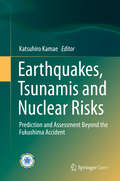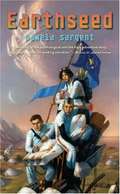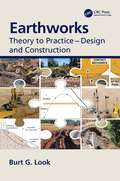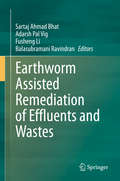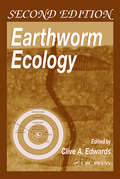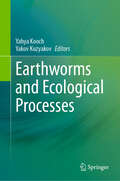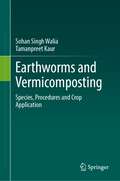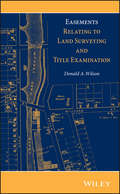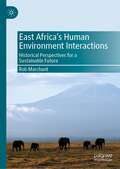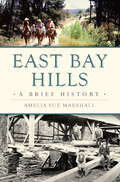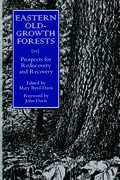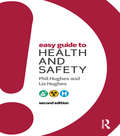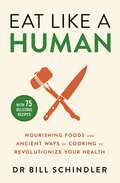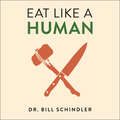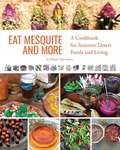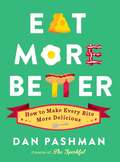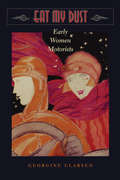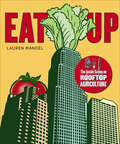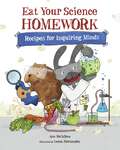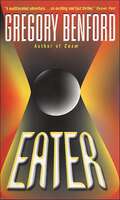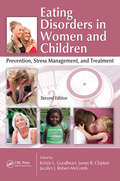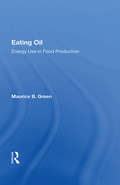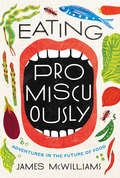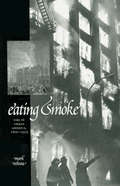- Table View
- List View
Earthquakes, Tsunamis and Nuclear Risks
by Katsuhiro KamaeThis book covers seismic probabilistic risk assessment (S-PRA) and related studies which have become more important to increase the safety of nuclear facilities against earthquakes and tsunamis in the face of the many uncertainties after the Fukushima accident. The topics are (1) Active faults and active tectonics important for seismic hazard assessment of nuclear facilities,(2) Seismic source modeling and simulation and modeling techniques indispensable for strong ground motion prediction, and (3) PRA with external hazard and risk communication. The Fukushima accident has showed us the limitations of the deterministic evaluation approach to external events (an earthquake and tsunami) in which there are many uncertainties. Furthermore, public anxiety regarding nuclear safety because of an unexpected threat caused by an earthquake or tsunami is growing. The current policy on the estimation of the design basis of ground motion as well as tsunami height still has not been improved following the Fukushima accident. In particular, the risk concept in a nuclear system regarding seismic motion and a tsunami beyond the design basis is indispensable. Therefore, research and development for PRA enhancing nuclear safety are being actively pursued not only in Japan but also worldwide. This book provides an opportunity for readers to consider the future direction of nuclear safety vis-à-vis natural disasters.
Earthseed
by Pamela SargentShip hurtles through space. Deep within its core, it carries the seed of humankind. Launched by the people of a dying Earth over a century ago, its mission is to find a habitable world for the children -- fifteen-year-old Zoheret and her shipmates -- whom it has created from its genetic banks. To Zoheret and her shipmates, Ship has been mother, father, and loving teacher, preparing them for their biggest challenge: to survive on their own, on an uninhabited planet, without Ship's protection. Now that day is almost upon them... but are they ready to leave Ship? Ship devises a test. And suddenly, instincts that have been latent for over a hundred years take over. Zoheret watches as friends become strangers -- and enemies. Can Zoheret and her companions overcome the biggest obstacle to the survival of the human race -- themselves?
Earthworks: Theory to Practice - Design and Construction
by Burt G. LookCase studies are used to show how theory is applied in practice. In the design and construction process, various models are used – geotechnical, laboratory, analytical, delivery, and economic models as the project is developed from planning to construction. This book explores the use and limitations of these earthwork models to be understood and appropriately applied. This book evolved from an earthworks course to practicing engineers over a 10-year period. Theory alone is not enough. Experience alone without relating back to theory can sometimes be misleading if transferred without understanding the fundamentals. The book benefited from the experiences of those many practicing engineers and the author’s experience in multi-disciplinary consulting companies as well as specialist geotechnical companies and government departments. The basics of soil, rock and compaction mechanics as applied to field conditions are covered. Material typically not covered in other textbooks, include the applications and limitations of associated "standard" laboratory and field testing. Specific chapters are dedicated to excavation, subgrade and expansive clay assessment and treatment. Useful design practices as well as the development and application of specifications is covered. A specification, test or design in one climatic condition or geology may not apply in another.
Earthworm Assisted Remediation of Effluents and Wastes
by Sartaj Ahmad Bhat Adarsh Pal Vig Fusheng Li Balasubramani RavindranThis book provides updated and comprehensive information on the effective functioning of earthworms used alone or in combination with other biological systems/microbes, as well as factors affecting the process and performance of vermiremediation under a range of conditions. It also compares earthworm assisted vermifiltration with other conventional biochemical methods. Presenting cutting-edge research on the earthworm assisted remediation of industrial and municipal effluents and sludges, along with its role in solid waste management (SWM), the book will benefit readers from the research community and industrial sector alike, familiarizing them with the latest remediation techniques for wastewater and different types of solid waste.
Earthworm Ecology
by Clive A. EdwardsEarthworm Ecology, Second Edition updates the most comprehensive work available on earthworm ecology with extensive revisions of the original chapters. New chapters analyze the history of earthworm research, the importance of earthworms as representatives of soil fauna and how they affect plant growth, the effects of the invasion of exotic earthworms into North America and other regions, and vermiculture and vermicomposting in Europe.This well-illustrated, expansive study examines the important and often overlooked impact earthworms have on the environment. It discusses the impact of climate, soil properties, predation, disease and parasitism, and competition upon earthworm ecology.
Earthworms and Ecological Processes
by Yahya Kooch Yakov KuzyakovEarthworms are the most important members of the soil detritivore community and function as soil engineers because of their effects on soil properties and their influence on the availability of resources for other organisms, including microorganisms and plants. Soil productivity and plant growth are strongly affected by biological activities of earthworms. They act on soil structures through creation of burrows which facilitate water and gas transport, incorporation of litter into soil, mixing of soil minerals, organic materials and breaking down of soil organic matter, ejection of surface and or subsurface casts. Earthworms have positive effects on the soil fabric and on the decomposition and mineralization of litter by breaking down organic matter and producing large amounts of feaces, thereby mixing litter with the mineral soil. Therefore, they play an important part humus form changes according to the patterns of plant communities succession. Consequently, they are also good bio-indicators for soil and site quality, and are thus useful when planning ecosystem function improvements. Earthworm's populations are indicators in degraded regions and in soil reclamations. Aristole called them "intestines of the earth" and the eminent nineteenth century biologist, Charles Darwin, spent many years observing their major influence on humus formation and soil transport . However, the links between their impacts on the soil environment and the resulting modification of natural selection pressures on engineers as well as on other organisms have received little attention. Based on papers recently published in the Science journal, Phillips et al. (2019) document an impressive group effort by 141 researchers from 35 countries to develop a global-scale atlas of earthworms. In addition, Fierer (2019) described the earthworms’ place on earth. So, Darwin’s legacy continues. Despite the vast increase in scientific literature on earthworms in recent years, much remains to be known of their basic biology, ecology and functioning. In this book we summarized the current knowledge in relation to ecological processes involved with earthworms in croplands, rangelands, forests and urban soils.
Earthworms and Vermicomposting: Species, Procedures and Crop Application
by Sohan Singh Walia Tamanpreet KaurThis book explains the lifecycle of earthworms, biological features, multiplication of worms, species of earthworms that are suitable for vermicomposting, different sources of vermicompost, nutrient recovery and different procedures for making of vermicompost and importance of application of vermicompost in cereal, fruit and vegetable crops. The tremendous increase in population, urbanization, industrialization and agricultural production results in accumulation quantities of solid wastes. This has created serious problem in the environment. In order to dispose this waste safely it should be converted effectively. This is achieved by bio-composting and vermicomposting of farm, urban and agro-industrial waste. It is being increasing realized that composting is an environment friendly process, convert wide variety of wastes into valuable agricultural inputs. Compost is excellent source of humus and plant nutrients, on application of which improve soil biophysical properties and organic matter status of the soil. India generates about 350 million tonnes of agricultural waste every year. Agricultural wastes include crop residues, weeds, leaf litter, sawdust, forest waste, and livestock waste. Under appropriate conditions, worms eat agricultural waste and reduce the volume by 40 to 60%. Vermicompost produced by the activity of earthworms is rich in macro and micro-nutrients, vitamins, growth hormones, enzymes such as proteases, amylases, lipase, cellulase and chitinase and immobilized microflora. This book will assist farmers, students and scholars to guide them about lifecycle of earthworms, biological features, multiplication of worms, species of earthworms that are suitable for vermicomposting and different procedures for making of vermicompost. This book will also benefit students of agriculture at graduate and post graduate level as students have a designated course on vermicomposting.
Easements Relating to Land Surveying and Title Examination
by Donald A. WilsonCONCISE, IN-DEPTH COVERAGE OF THE COMPLEX ISSUES OF EASEMENTS AND THEIR REVERSION The definition, use, defense, and retirement of easements are areas of active work for land surveyors, lawyers, and the holders and buyers of easements, such as utility companies and highway departments. Easements Relating to Land Surveying and Title Examination is the most up-to-date reference that succinctly and incisively covers easements and reversions, written for land surveyors and title examiners. This comprehensive guide covers the various forms of easements, their creation, reversion, and termination. Its numerous case studies offer examples of situations in which easements resulted in litigation and reveal how these cases were decided by the courts. The book also includes coverage of undescribed easements and guidance on how to properly write new easement descriptions. This useful, practical handbook: Defines easements and easement terminology Covers both right-of-way and right-of-way line easements Explains the creation of easements by express grant, reservation or exception, agreement or covenant, implication, estoppel, custom, and more Explores all types of easement termination, including expiration, release, merger of title, abandonment, prescription or adverse possession, and many others Provides thorough descriptions of problem easements, from undescribed and blanket easements to hidden and rolling easements Offers extensive coverage of reversion of easements, including highway-related reversions and rules for locating and defining reversions Presents detailed information for land surveyors and title examiners on how to handle these easement issues
East Africa’s Human Environment Interactions: Historical Perspectives for a Sustainable Future
by Rob MarchantThis book is an ambitious integration of ecological, archaeological, anthropological land use sciences, drawing on human geography, demography and economics of development across the East Africa region. It focuses on understanding and unpicking the interactions that have taken place between the natural and unnatural history of the East African region and trace this interaction from the evolutionary foundations of our species (c. 200,000 years ago), through the outwards and inwards human migrations, often associated with the adoption of subsistence strategies, new technologies and the arrival of new crops. The book will explore the impact of technological developments such as transitions to tool making, metallurgy, and the arrival of crops also involved an international dimension and waves of human migrations in and out of East Africa. Time will be presented with a widening focus that will frame the contemporary with a particular focus on the Anthropocene (last 500 years) to the present day. Many of the current challenges have their foundations in precolonial and colonial history and as such there will be a focus on how these have evolved and the impact on environmental and human landscapes. Moving into the Anthropocene era, there was increasing exposure to the International drivers of change, such as those associated with Ivory and slave trade. These international trade routes were tied into the ensuing decimation of elephant populations through to the exploitation of natural mineral resources have been sought after through to the present day.The book will provide a balanced perspective on the region, the people, and how the natural and unnatural histories have combined to create a dynamic region. These historical perspectives will be galvanized to outline the future changes and the challenges they will bring around such issues as sustainable development, space for wildlife and people, and the position of East Africa within a globalized world and how this is potentially going to evolve over the coming decades.
East Bay Hills: A Brief History (Brief History)
by Amelia Sue MarshallLike the mist rising from San Francisco Bay encircles the towering redwoods, the little-known legends of the East Bay Hills enrich a glorious history. Follow the trails of Saclan and Jalquin-Yrgin people over the hills and through the valleys. Ride with the mounted rangers through the Flood of ’62. Break into a sealed railroad tunnel with a pack of junior high school boys. Learn how university professors, civil servants and wealthy businessmen planned for years to create a chain of parks twenty miles along the hilltops. Author Amelia Sue Marshall explores the heritage of these storied parklands with the naturalists who continue to preserve them and the old-timers who remember wilder days.
Eastern Old-Growth Forests: Prospects For Rediscovery And Recovery
by Anthony Cook Charles Schaadt Steve Comers Mary Byrd Davis J. Merrill Lynch Kathy SeatonEastern Old-Growth Forests is the first book devoted exclusively to old growth throughout the East. Authoritative essays from leading experts examine the ecology and characteristics of eastern old growth, explore its history and value -- both ecological and cultural -- and make recommendations for its preservation.The book provides a thorough overview of the importance of old growth in the East including its extent, qualities, and role in wildlands restoration. It will serve a vital role in furthering preservation efforts by making eastern old-growth issues better known and understood.
Easy Electronics
by Charles PlattThis is the simplest, quickest, least technical, most affordable introduction to basic electronics. No tools are necessary--not even a screwdriver. Easy Electronics should satisfy anyone who has felt frustrated by entry-level books that are not as clear and simple as they are supposed to be.Brilliantly clear graphics will take you step by step through 12 basic projects, none of which should take more than half an hour. Using alligator clips to connect components, you see and hear immediateresults. The hands-on approach is fun and intriguing, especially for family members exploring the projects together.The 12 experiments will introduce you to switches, resistors, capacitors, transistors, phototransistors, LEDs, audio transducers, and a silicon chip. You'll even learn how to read schematics by comparing them with the circuits that you build.No prior knowledge is required, and no math is involved. You learn by seeing, hearing, and touching. By the end of Experiment 12, you may be eager to move on to a more detailed book. Easy Electronics will function perfectly as a prequel to the same author's bestseller, Make: Electronics.All the components listed in the book are inexpensive and readily available from online sellers. A very affordable kit has been developed in conjunction with the book to eliminate the chore of shopping for separate parts. A QR code inside the book will take you to the vendor's web site.Concepts include:Transistor as a switch or an amplifierPhototransistor to function as an alarmCapacitor to store and release electricityTransducer to create sounds from a timerResistor codesA miniature light bulb to display voltageThe inner workings of a switchUsing batteries and resistors in series and parallelCreating sounds by the pressure of your fingerMaking a matchbox that beeps when you touch itAnd more. Grab your copy and start experimenting!
Easy Guide to Health and Safety
by Phil Hughes Liz HughesDo you need to get to grips with health and safety principles but don’t have time to wade through reams of legislation and guidance? Do you need practical step-by-step guidance on health and safety issues for your small business? Then this is the book for you. Building on the success of the first edition, this fully revised Easy Guide to Health and Safety 2nd edition introduces the health and safety issues which the self-employed and managers, directors and staff with health and safety responsibilities in small businesses face every day. Written in plain English, this new edition will take you through the principles of health and safety in a clear, jargon-free manner. Fully revised and packed with practical guidance, the Easy Guide to Health and Safety will ensure that you are well equipped to keep yourself and others safe in the workplace. Provides small businesses with the necessary information to understand obligations and gain control of health and safety in the workplace Packed with practical guidance and handy checklists and forms. Also suitable for students studying towards IOSH Working Safely and NVQ level 1 and 2 courses from City and Guilds and other NVQ awarding bodies.
Eat Like a Human: Nourishing Foods and Ancient Ways of Cooking to Revolutionise Your Health
by Bill SchindlerVegan or carnivore? Vegetarian or gluten-free? Keto or Mediterranean? Fasting or Paleo? Our relationship to food is filled with confusion and insecurity. Every day we hear about a new ingredient that is good or bad, a new diet that promises everything. But the truth is that none of those labels matter. The secret to becoming healthier, losing weight, living a pain-free and energetic life and healing the planet has nothing to do with counting calories, reducing portion sizes or feeling deprived - the key is re-learning how to eat like a human.This means finding food that is as nutrient-dense as possible, and preparing that food using methods that release those nutrients and make them safe and bioavailable to our bodies, which is exactly what allowed our ancestors, millions of years ago, to not only live but thrive. Archaeologist and primitive technologist Dr Bill Schindler draws on cutting-edge science and a lifetime of research to show readers how to live like modern 'hunter-gatherers' by using the same strategies our ancestors used - as well as techniques still practiced by many cultures around the world - to make food as safe, nutritious, bioavailable and delicious as possible.With each chapter dedicated to a specific food group, in-depth explanations of different foods and cooking techniques and concrete takeaways, as well as 75+ recipes, Eat Like a Human will permanently change the way you think about food, and help you live a happier, healthier, and more connected life.
Eat Like a Human: Nourishing Foods and Ancient Ways of Cooking to Revolutionise Your Health
by Bill SchindlerBill Schindler takes us deep into his lifetime of archaeological research to show us why and how our dietary choices and cooking techniques need to follow our ancestors' lead and focus on nutrient density and bioavailability.Our relationship to food is filled with confusion and insecurity. Vegan or carnivore? Vegetarian or gluten-free? Keto or Mediterranean? Fasting or Paleo? Every day we hear about a new ingredient that is good or bad, a new diet that promises everything. Our conversations are filled with a dizzying array of approaches to and perspectives on our relationship with food. But the truth is that none of those labels matter. The secret to becoming healthier, losing weight, living a pain-free and energetic life and healing the planet has nothing to do with counting calories, reducing portion sizes or feeling deprived - the key is re-learning how to eat like a human.This means finding food that is as nutrient-dense as possible, and preparing that food using methods that release those nutrients and make them safe and bioavailable to our bodies, which is exactly what allowed our ancestors, millions of years ago, to not only live but thrive. In Eat Like a Human, archaeologist and primitive technologist Dr Bill Schindler draws on cutting-edge science and a lifetime of research to explain how safety, nutrient density and bioavailability are the cornerstones of a healthy diet. He shows readers how to live like modern 'hunter-gatherers' by using the same strategies our ancestors used - as well as techniques still practiced by many cultures around the world - to make food as safe, nutritious, bioavailable and delicious as possible.With each chapter dedicated to a specific food group, in-depth explanations of different foods and cooking techniques and concrete takeaways, as well as 75+ recipes, Eat Like a Human will permanently change the way you think about food, and help you live a happier, healthier, and more connected life.(P)2022 Hachette Audio
Eat Mesquite and More: A Cookbook for Sonoran Desert Foods and Living
by Desert Staff<p>Eat Mesquite and More celebrates native food forests of the Sonoran Desert and beyond with over 170 recipes featuring wild, indigenous foods, including mesquite, acorn, barrel cactus, chiltepin, cholla, desert chia, desert herbs and flowers, desert ironwood, hackberry, palo verde, prickly pear, saguaro, wolfberry, and wild greens. The recipes--contributed by desert dwellers, harvesters, chefs, and innovators--capture a spirit of adventure and reverence inviting both newcomers and seasoned experts to try new foods and experiment with new flavors. <p>More than a cookbook, this guide also encourages a renaissance of "wild agriculture," one that foregrounds the ethical harvesting and selection of wild foods and the re-planting of native food sources in urban and residential areas without imported water or fertilizers. It contains stories of significant individuals, organizations, and businesses that have contributed knowledge, products, and innovation in the planting, harvesting, and use of wild, native desert foods. Additional essays reveal the poetry of the foraging life, how to plant the rain, and medicinal uses and ethnobotanical histories of desert plants. <p>Many of the food plants included in this cookbook--or close relatives of them--can be found or grown in the other deserts and drylands of North America and South America. As such, this book becomes a template for harvesting and cooking throughout the Americas. Universally, its concepts and approach can help communities everywhere collaborate with their ecosystem, while enhancing the health of all.</p>
Eat More Better: How to Make Every Bite More Delicious
by Dan PashmanWhat if you could make everything you eat more delicious?As creator of the WNYC podcast The Sporkful and host of the Cooking Channel web series You're Eating It Wrong, Dan Pashman is obsessed with doing just that. Eat More Better weaves science and humor into a definitive, illustrated guidebook for anyone who loves food. But this book isn’t for foodies. It’s for eaters. In the bestselling tradition of Alton Brown’s Good Eats and M.F.K. Fisher’s The Art of Eating, Pashman analyzes everyday foods in extraordinary detail to answer some of the most pressing questions of our time, including: Is a cheeseburger better when the cheese is on the bottom, closer to your tongue, to accentuate cheesy goodness? What are the ethics of cherry-picking specific ingredients from a snack mix? And what role does surface-area-to-volume ratio play in fried food enjoyment and ice cube selection? Written with an infectious blend of humor and smarts, Eat More Better is a tongue-in-cheek textbook that teaches readers to eat for maximum pleasure. Chapters are divided into subjects like engineering, philosophy, economics, and physical science, and feature hundreds of drawings, charts, and infographics to illustrate key concepts like The Porklift—a bacon lattice structure placed beneath a pancake stack to elevate it off the plate, thus preventing the bottom pancake from becoming soggy with syrup and imbuing the bacon with maple-based deliciousness. Eat More Better combines Pashman’s award-winning writing with his unparalleled field research, collected over thirty-seven years of eating at least three times a day. It delivers entertaining, fascinating, and practical insights that will satisfy your mind and stomach, and change the way you look at food forever. Read this book and every bite you take will be better.
Eat My Dust: Early Women Motorists (The Johns Hopkins University Studies in Historical and Political Science #126)
by Georgine ClarsenThe history of the automobile would be incomplete without considering the influence of the car on the lives and careers of women in the earliest decades of the twentieth century. Illuminating the relationship between women and cars with case studies from across the globe, Eat My Dust challenges the received wisdom that men embraced automobile technology more naturally than did women.Georgine Clarsen highlights the personal stories of women from the United States, Britain, Australia, and colonial Africa from the early days of motoring until 1930. She notes the different ways in which these women embraced automobile technology in their national and cultural context. As mechanics and taxi drivers—like Australian Alice Anderson and Brit Sheila O'Neil—and long-distance adventurers and political activists—like South Africans Margaret Belcher and Ellen Budgell and American suffragist Sara Bard Field—women sought to define the technology in their own terms and according to their own needs. They challenged traditional notions of femininity through their love of cars and proved they were articulate, confident, and mechanically savvy motorists in their own right.More than new chapters in automobile history, these stories locate women motorists within twentieth-century debates about class, gender, sexuality, race, and nation.
Eat Up: The Inside Scoop on Rooftop Agriculture
by Lauren MandelFrom roof to table – urban food has reached new heights.Soaring prices and concerns about chemical-laden fruits and vegetables increasingly drive us to grow our own healthy food close to home. In cities, however, vanishing ground space and contaminated soils spur farmers, activists, and restaurateurs to look to the skyline for a solution. The hunger for local food has reached new heights, and rooftops can provide the space that cities need to bring fresh, organic produce to tables across North America.The first full-length book to focus entirely on rooftop agriculture, Eat Up views this growing movement through a practitioner's lens, explaining:Structural, access, and infrastructural considerationsZoning and building codesProven growing techniquesBusiness and marketing strategiesThis graphically rich guide provides inspiration and advice to aspiring growers through photographs of successful rooftop farms and gardens and interviews with industry professionals. Easy-to-use checklists and a decision tree are included to help gauge the viability of each unique rooftop opportunity. Essential reading for home gardeners, entrepreneurs, restaurateurs, policy makers, academics, and designers, Eat Up takes urban agriculture to a whole new level, proving that rooftop farming is not just pie in the sky—it is the future of urban food.Lauren Mandel holds a master's degree in landscape architecture from the University of Pennsylvania and a bachelor of arts degree in environmental science. She is a project manager and rooftop agriculture specialist at Roofmeadow, where she designs green roofs and oversees green roof and rooftop agriculture projects around the country.
Eat Your Science Homework: Recipes for Inquiring Minds (Eat Your Homework #2)
by Ann McCallumHungry readers discover delicious and distinct recipes in this witty companion to Eat Your Math Homework. Beginning with an overview of the scientific method and a primer in lab (sorry, kitchen) safety, this light-hearted cookbook will inspire a hunger for knowledge! A main text explains upper-elementary science concepts, including subatomic particles, acids and bases, black holes, and more. Alongside six kid-friendly recipes which encourage experiental learning and visual thinking, side-bars encourage readers to also experiment and explore outside of the kitchen. A review, glossary, and index make the entire book easy to digest.
Eater
by Gregory BenfordA scientist facing personal tragedy discovers a sentient black hole targeting humanity in this hard sci-fi thriller from &“a superb storyteller&” (Houston Post). Dr. Benjamin Knowlton&’s private world is crumbling around him. On the threshold of their greatest achievement, the renowned astrophysicist learns that his beloved wife and partner, Channing—an ex-astronaut-turned astronomer—is dying of cancer. Meanwhile, something looms alarmingly on the far edge of the solar system: at once a scientific find of unparalleled importance that could ensure the Knowltons&’ immortality, and a potential earth-shattering cataclysm that dwarfs their private one. For Benjamin and Channing have discovered &“Eater,&” an eons-old black hole anomaly that devours stars and worlds. Yet its most awesome and devasting secrets are still to be revealed . . . and feared.&“A celestial horror tale, a cosmological adventure, a literate end-of-the-world epic, and a story bursting with old-fashioned &‘sense of wonder.&’&” —Orlando Sentinel&“Benford spins poetry from textbook phenomena . . . [His] novel proves that scientific wisdom involves the heart and soul as well as the mind.&” —The Washington Post Book World&“The scientific equivalent of a taut police procedural . . . Benford&’s deft, suspenseful weaving of the struggle between Eater and humanity blends two threads with maximal impact.&” —Newark Star Ledger &“Even in the face of huge events and special effects sequences, Benford manages to keep the characters and the human-scale issues important . . . It&’s just this kind of juggling that characterizes the best of Benford&’s work . . . Eater is Benford&’s most Benfordesque book in quite a while.&” —Locus
Eating Disorders in Women and Children: Prevention, Stress Management, and Treatment, Second Edition
by Ljubisa R. RadovicOur understanding of eating disorders has improved markedly over the past 10 years since the publication of the previous edition of this volume. Early intervention is the key, as body dissatisfaction, obsession with thinness, and restrained and binge eating can be found in those as young as ten. Exploring prevention methods and therapeutic options, the second edition of Eating Disorders in Women and Children: Prevention, Stress Management, and Treatment is updated with new research on these devastating maladies.Highlights in the second edition include: An emphasis on the physiology of eating disorders and genetic factors related to anorexia and bulimia Theories on prevention and the identification of at-risk individuals The latest information on therapeutic modalities, including cognitive behavioral, interpersonal, constructionist, and narrative approaches as well as pharmaceutical management Nutritional evaluation and treatment Specific exercise recommendations for women and children with eating disorders An accompanying downloadable resources containing a PowerPoint® presentation for each chapter With contributions from acclaimed clinicians widely known for their work with the eating disorder population, this volume recognizes the multifaceted nature of these disorders, addresses the widening demographic range of those afflicted, and delves into the issues behind their development. It provides practical recommendations for treatment from many perspectives, presenting enormous hope for people who painfully struggle with these disorders. In addition, it explores critical measures that can be taken to help the larger population understand and work to prevent eating disorders in their communities.
Eating Oil: Energy Use In Food Production
by Maurice B. GreenThis book provides facts and figures to show how fast fossil fuel energy is being used up in the developed countries. It considers the problems of feeding the population of the developing countries to whom the expedient of using fossil fuel energy to boost food production is not available.
Eating Promiscuously: Adventures in the Future of Food
by James McWilliamsA bold and bracing argument for the complete reimagining of the human diet by the critically acclaimed author of Just Food The human practice of farming food has failed. There are 7,500 known varieties of domesticated apples; we regularly eat about five. Seventy–five percent of the world's food derives from five animals and twelve plants. Factory farmed meat is a major source of greenhouse gas emissions (about 14 percent, larger than transportation) and consumes 75 percent of the water in drought–prone regions such as the West. We are struck in a rut of limited choices, ad the vast majority of what we eat is detrimental to our health and the welfare of the planet. But what if we could eliminate agriculture as we know it? What if we could start over?James McWilliams's search for more expansive palate leads him to those who are actively exploring the fringes of what we can eat, a group of outliers seeking nutrition innovation outside the industrial food system. Here, we meet insect manufacturers, seaweed harvesters, road kill foragers, plant biologists, and oyster farmers who seek to open both our minds and our mouths—and to overturn our most basic assumptions about food, health, and ethics. Eating Promiscously generates hope for a more tasteful future—one in which we eat thousands of foods rather than dozens—with a new philosophy that could save both ourselves and our planet.
Eating Smoke: Fire in Urban America, 1800–1950
by Mark TebeauDuring the period of America's swiftest industrialization and urban growth, fire struck fear in the hearts of city dwellers as did no other calamity. Before the Civil War, sweeping blazes destroyed more than $200 million in property in the nation's largest cities. Between 1871 and 1906, conflagrations left Chicago, Boston, Baltimore, and San Francisco in ruins. Into the twentieth century, this dynamic hazard intensified as cities grew taller and more populous, confounding those who battled it. Firefighters' death-defying feats captured the popular imagination but too often failed to provide more than symbolic protection. Hundreds of fire insurance companies went bankrupt because they could not adequately deal with the effects of even smaller blazes.Firefighters and fire insurers created a physical and cultural infrastructure whose legacy—in the form of heroic firefighters, insurance policies, building standards, and fire hydrants—lives on in the urban built environment. In Eating Smoke, Mark Tebeau shows how the changing practices of firefighters and fire insurers shaped the built landscape of American cities, the growth of municipal institutions, and the experience of urban life. Drawing on a wealth of fire department and insurance company archives, he contrasts the invention of a heroic culture of firefighters with the rational organizational strategies by fire underwriters. Recognizing the complexity of shifting urban environments and constantly experimenting with tools and tactics, firefighters fought fire ever more aggressively—"eating smoke" when they ventured deep into burning buildings or when they scaled ladders to perform harrowing rescues. In sharp contrast to the manly valor of firefighters, insurers argued that the risk was quantifiable, measurable, and predictable. Underwriters managed hazard with statistics, maps, and trade associations, and they eventually agitated for building codes and other reforms, which cities throughout the nation implemented in the twentieth century. Although they remained icons of heroism, firefighters' cultural and institutional authority slowly diminished. Americans had begun to imagine fire risk as an economic abstraction.By comparing the simple skills employed by firefighters—climbing ladders and manipulating hoses—with the mundane technologies—maps and accounting charts—of insurers, the author demonstrates that the daily routines of both groups were instrumental in making intense urban and industrial expansion a less precarious endeavor.
